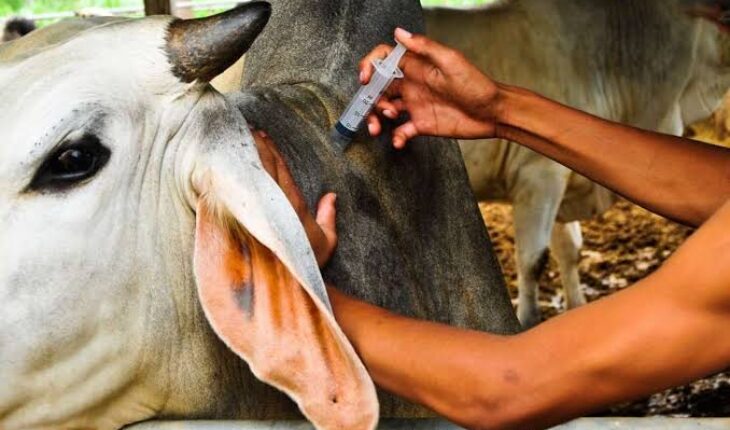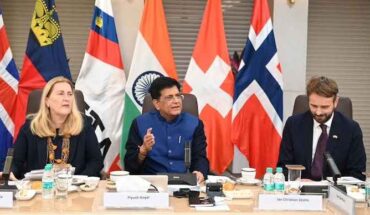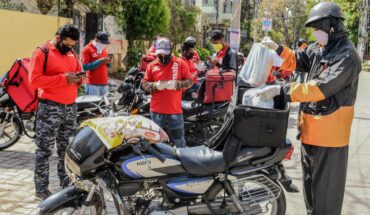India’s livestock sector, the backbone of its rural economy, which plays a key-role in reinforcing the country’s agriculture by stressing upon the animal vaccines. In spite of the claim of India’s livestock population and her stating her being a global leader in milk production; however, she is being dependent for importing milk powder to imports from abroad. The inability of the country’s much-trumpeted rhetoric of offering assistance to the farmers suffering the quality of the cattle and further the animals suffer losses, estimated at Rs. 50,000 crores.
The quality of the cattle needs to be improved as well as an immediate need for preventing them from diseases. The government’s ineffectiveness in introducing a vaccination for the cattle has weakened the rural economy of the farmers. During the past five years, it is estimated a huge loss or the wastage of nearly Rs. one lakh crore earmarked by the government. Being committed to the welfare of the cattle, this author is keen that the government should undertake thorough investigation regarding the squandering of the government funds, the usage of substandard vaccines, inefficient administration, and a systemic reluctance to acknowledge the extent of the problem.
As highlighted by a 2019 ResearchGate study, this financial haemorrhage is a direct consequence of “our legacy to hide the disease, due to substandard vaccines, inefficient vaccination, ill-education of livestock farmers and above all the political will.” The situation has further worsened for the farmers due to the apathy of the government towards the challenges the farmers and cattle suffer due to the systems failures. The roots of this crisis are multifaceted, spanning the entire vaccine value chain from production to field application.
Environmental changes and the emergence of new viral variants have further exacerbated the situation, overwhelming an already strained veterinary infrastructure. Farmers, often unaware of the intricate web of internal conflicts and systemic failures, bear the brunt of these shortcomings. This article delves into the core issues plaguing India’s animal vaccination landscape, examining expert opinions, policy gaps, and the urgent need for comprehensive reforms.
Major Livestock and Pet Diseases:
Foot-and-Mouth Disease (FMD) is a highly contagious viral disease affecting cloven-hoofed animals (cattle, buffalo, sheep, goats, pigs). The symptoms include fever, blisters, lameness, and reduced milk yield. The National Animal Disease Control Programme (NADCP), launched in 2019, allocates Rs. 13,343 crores to vaccinate 53 crore animals by 2025, aiming for FMD eradication by 2030.The polyvalent inactivated vaccine is administered biannually (2-4 ml for cattle/buffalo, 1-2 ml for sheep/goats. Its cost is approximately Rs. 20-30 per dose, but is also available at the government-run centre without any charges.
According to studies conducted in 2016, if the programme fails the estimated annual loss could be 20,000 crores. However, a network of facilities is needed to reach each animal, while maintaining a cold chain for its storage at a low temperature 2-8 degrees C. It should be repeated every six months by injecting a booster dose.
Hemorrhagic Septicemia (HS): It is a bacterial disease (Pasteurella multocida) affecting cattle and buffalo, causing high fever, throat swelling, and sudden death. Its vaccine, Alum-precipitated or oil-adjuvanted bacterin (2-5 ml, subcutaneous, annual) cost Rs.5-10 per dose. It is being made available free of cost at the government hospitals under the scheme of the Livestock Health & Disease Control (LH&DC) schemes. According to the 2014 estimates, if not controlled, it would lead to the cumulative losses to the tune of Rs. 5,255 crores due to high mortality of cattle affected by the disease.
Brucellosis: A zoonotic bacterial disease (Brucella abortus/melitensis) causing abortions and infertility in cattle, buffalo, sheep, and goats. It costs Rs. 10-15 per dose. With an outlay of Rs. 13,343 crore budget, it targets bovine females.
Peste des Petits Ruminants (PPR): It is a viral disease (Morbillivirus) affecting sheep and goats, with fever, diarrhoea, and may cause up to 90% mortality. It needs a vaccine, live attenuated (Sungri/96 strain, 1 ml, subcutaneous, lifelong immunity). It costs Rs. 2-5 per dose,
Classical Swine Fever (CSF): It is a viral disease (Pestivirus) in pigs, causing fever, haemorrhages, and high mortality. Its vaccine, live attenuated C-strain (1 ml, intramuscular, annual boosters) costs Rs. 2 per dose.
The Viruses Affect Pets
Canine Parvovirus (CPV): A viral disease in dogs causing severe vomiting, diarrhoea, and dehydration, often fatal in puppies. The vaccine cost: Rs. 300-500 per dose.
Rabies: A fatal zoonotic viral disease affecting dogs, cats, and humans, causing neurological symptoms. The vaccine costs Rs. 100-200 (private); free via government anti-rabies campaigns. The government budget is estimated between Rs. 100-200 crore annually for rabies control (human and animal combined).
Canine Distemper: A viral disease in dogs causing respiratory, gastrointestinal, and neurological issues. The vaccine costs Rs. 300-500 per dose.
Feline Panleukopenia: A viral disease in cats causing fever, vomiting, and low white blood cell counts. The vaccine costs Rs. 400-600 per dose.
A Careless Approach
There is a growing awareness among farmers and pet lovers regarding the inability of the government to save the cattle and pets. Dr. R.S. Chauhan, a former Director of the Indian Veterinary Research Institute (IVRI) and WHO Advisor, paints a grim picture, deeming the national program “worthless” due to pervasive issues in procurement, transportation, and manufacturing of vaccines. He even observed that “distilled water might be as effective,” underscores the severity of the problem. This sentiment is echoed by the 2021 Parliamentary Committee, which identified vaccine quality as a “big issue.”
Dr. Chandra Shekhar Sahukar, former Joint Commissioner of Animal Husbandry and Deputy Advisor at NITI Aayog (an apology to the Planning Commission replaced by the PM Narendra Modi calling it the National Institution of Transforming India or NITI), further elucidates the systemic failures, highlighting inadequate regulatory oversight, substandard manufacturing practices, cold chain failures, and a cost-driven procurement system. These observations of the advisor to the NITI Aayog could not influence the government’s policy. It appeared to be just an observation made by an emasculated outfit.
The economic impact of ineffective vaccination programs is staggering. As detailed in the 2019 ResearchGate study, preventable diseases like Hemorrhagic Septicemia (HS), Foot-and-Mouth Disease (FMD), Brucellosis, Peste des Petits Ruminants (PPR), and Classical Swine Fever (CSF) result in annual losses of approximately Rs. 50,000 crores. This financial burden falls squarely on farmers, who are often ill-equipped to cope with the devastating consequences of disease outbreaks.
Author is an eminent scientist known for his contribution towards the key role of livestock in the country’s agricultural sector






